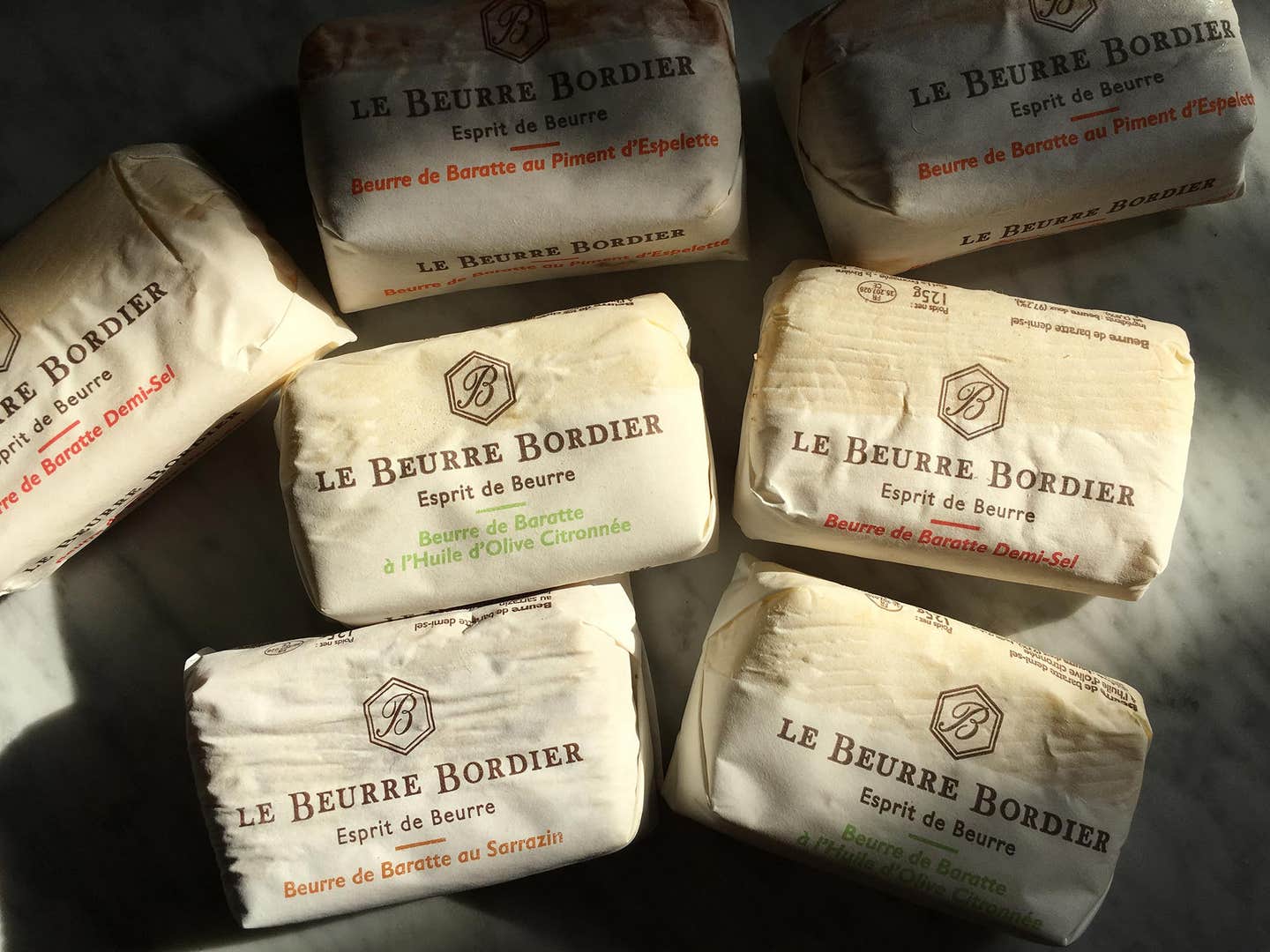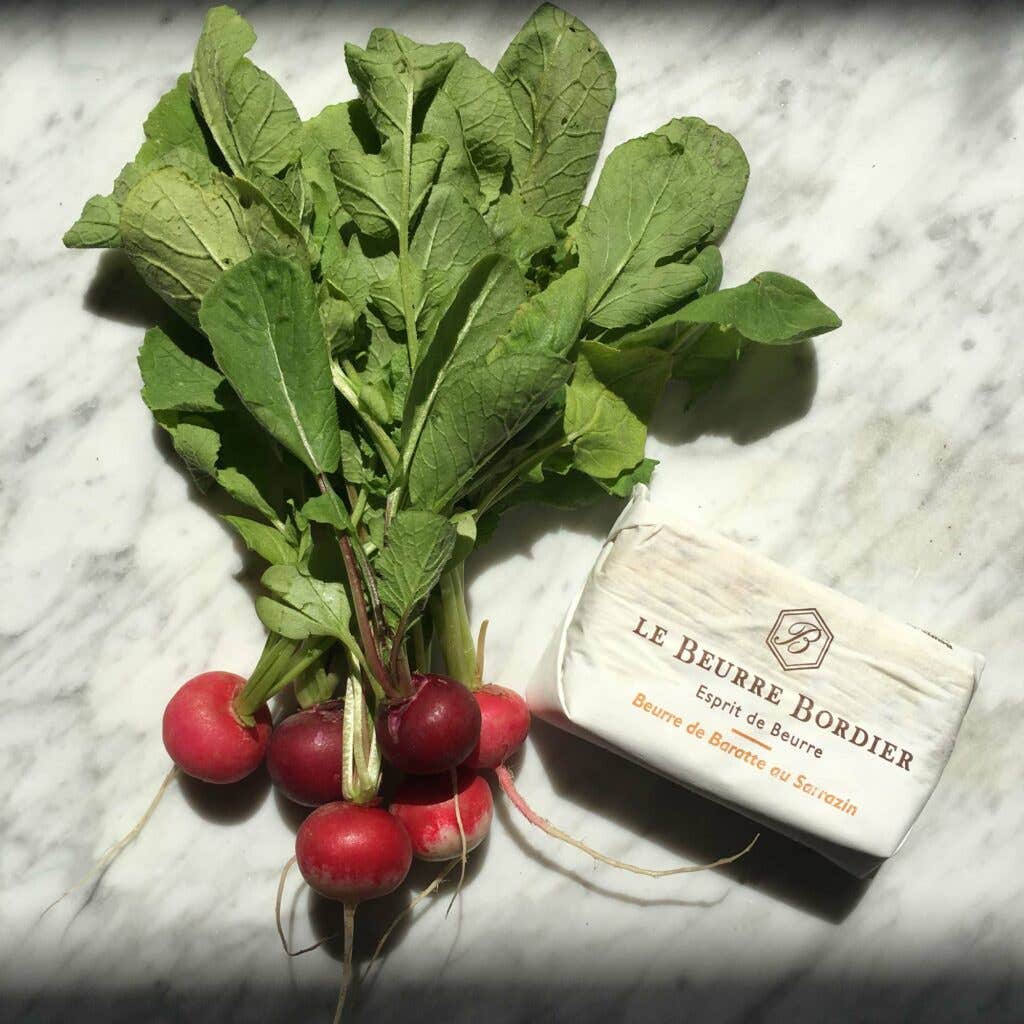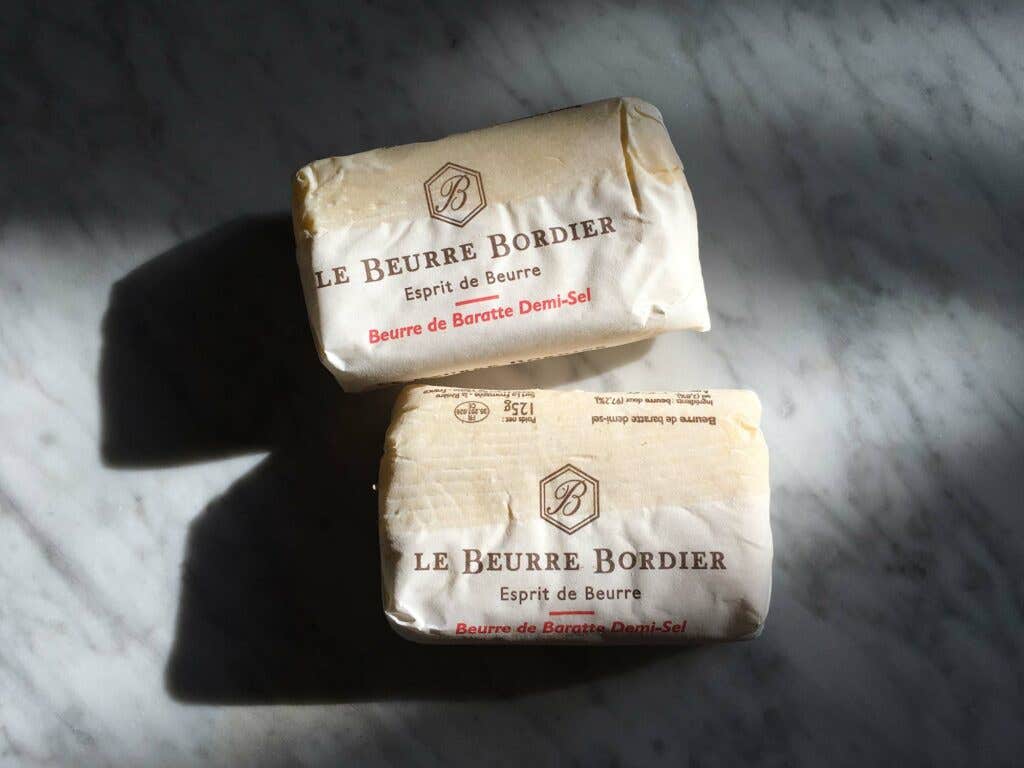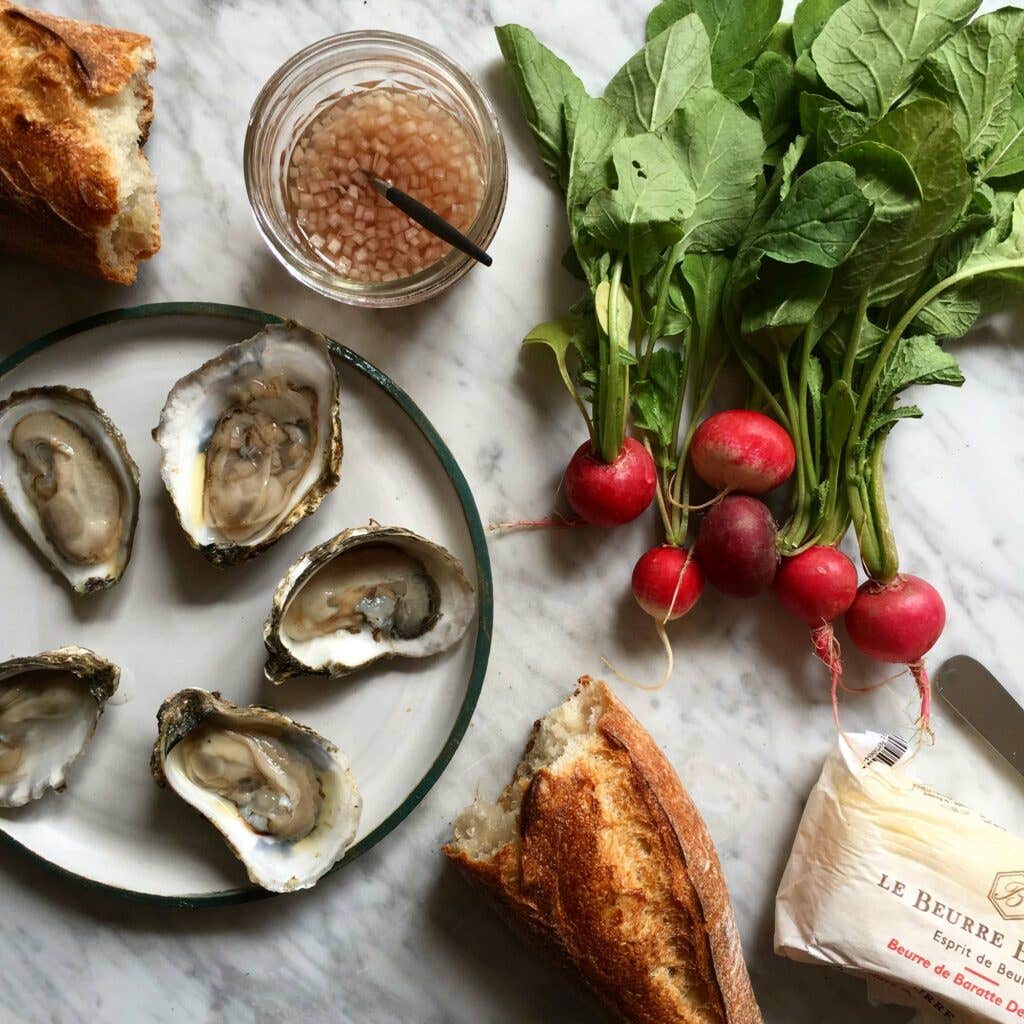
Here’s Why Bordier Might Be the Best Butter in the World
It’s worth smuggling past TSA (and now you don’t even have to)
I've been doing personal butter research for years: Several years ago I had butter in Paris (of course) that stopped me in my tracks, and since then I've been trying to find anything else to measure up to it. I've done several taste tests, I've made butter (cultured and not) from every good local cream I could get my hands on, I pick up any new-to-me butter I see, and after all that, I am convinced that there is no better butter in the world than Le Beurre Bordier. Maybe I'm extra sensitive to good butter because I grew up with those spray bottles of the I Can't Believe It's Not stuff, but I know I'm not alone in my aggressive enthusiasm. Once you experience the Bordier jolt, you're changed. You're hooked.
I know plenty of people who've smuggled it back from trips to France, who ask people to smuggle it back for them, and who try to stretch out their contraband butter bricks for as long as possible (and I've done all of those things, too). I've even gone so far as having it overnighted from a friend in Paris. It's that good. Bordier recently started popping up in a few restaurants in New York, and it's now being sold at Le District in New York City's Financial District, which means you no longer have to stress out about getting it through TSA.

What makes it so special? If you ask the man behind the butter, Jean-Yves Bordier, he'll say something modest like, "I haven't invented anything new, I use old methods that respect the land, the animals, and tradition." Actually, he's said exactly that—isn't it delightful and vague and French-artisan-sounding? But the thing Mr. Bordier doesn’t seem to be aware of is that his product makes you look at butter in a completely new way. It’s not just a mildly flavored fat that’s fine on bread, or good to bake with, or extra tasty when it’s browned; it’s a completely special ingredient in it’s own right, this butter can be appreciated the way a good cheese is. It's got so much character, the texture is noticeably elegant, and once you get some of his flavored butters, you realize this guy is like Willy Wonka for adults who like good food.

The importer who is bringing Bordier to New York sent me some up-close-and-personal intel from a recent visit to the Bordier workshop. Here's what I've learned about how the best butter in the world is made.
It starts with the milk: Bordier only sources milk from local small farmers who use the best farming practices. The cows responsible for Bordier live lovely lives grazing on grass and flowers, and enjoying their environment (no overcrowded and unpleasant factory farms for these guys).
They take their time: A typical brick of butter is made 6 hours after the cow is milked. It takes Bordier three days. For a lot of that time, the cream is culturing and developing flavor.
They knead differently: Regular butter is made on a large scale, in a factory setting that produces a lot of product at high speed. Bordier has a special wooden machine (only one!) called a Malaxeur that the butter is kneaded through, at a slow speed, for a specific amount of time—kneading time depends on the season, but it can be as long as 30 minutes. They say it helps develop flavor and create a silky texture. After the Malaxeur, they use special grooved paddles to pound the butter, by hand, before forming it into the shapes requested by chefs for each individual order. The hand movements with the paddles are very specific (you can see Mr. Bordier do this here), and they say they do this to respect the texture.
Bordier butter has very noticeable seasonal differences. Summer butter is very yellow, because the cows are grazing on fresh grass and wildflowers which are high in beta carotene. Summer butter is silky and tender, and has pronounced savory aromas. Winter butter is pale, like an ivory yellow, because the cows are eating dried grasses. The texture is more granular and brittle, and winter butter is sweeter.

But it doesn't matter what season it is. If you get your hands on this butter, you should stop to appreciate it. The time and effort that goes into it is completely unusual compared to industry standards, and you can tell when you taste it. Generously (and I mean very generously) slather it on bread, scoop it with radishes or any other crudite, melt it and drizzle it over pretty much any seafood, make the best caramel of your life with it. There are endless perfect ways to enjoy the most perfect butter.
Keep Reading
Continue to Next Story










